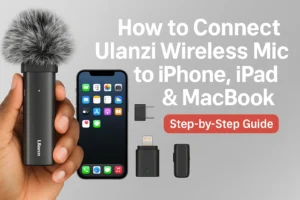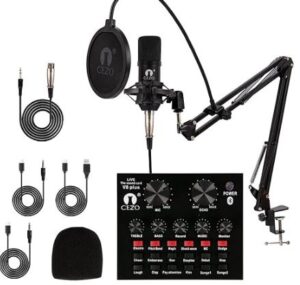- You have no items in your shopping cart
- Subtotal: ₹0.00

In a world dominated by wireless technology, the versatility of Apple’s AirPods extends beyond just delivering high-quality audio. Many users are unaware of the hidden gem these earbuds harbor – the ability to transform into a microphone. In this detailed guide, we will unravel the secrets of maximizing your AirPods’ potential as a reliable microphone for various purposes.
How to use airpods as microphone?
- Understanding the Basics: To utilize your AirPods as a microphone, begin by ensuring they are connected to your device via Bluetooth. Once paired, your AirPods can seamlessly transition from audio output to input, functioning as a microphone for recording voice notes, making calls, or engaging in virtual meetings.
- Configuring Settings for Optimal Performance: Navigate to your device’s Bluetooth settings to fine-tune your AirPods’ microphone performance. Adjust the input levels to suit your environment, ensuring clear and crisp audio transmission. Apple devices offer additional microphone customization options in the Control Center, allowing you to select your preferred input source.
- Enhancing Audio Quality with Noise Cancellation: One of the standout features of AirPods is their noise-canceling capability. Activate this feature to eliminate background noise, providing a cleaner and more professional audio output. This is particularly useful in crowded environments or during virtual meetings where clarity is paramount.
- Multi-Device Connectivity: Take advantage of the seamless multi-device connectivity of AirPods. Switch effortlessly between devices without compromising audio quality. This versatility makes AirPods an ideal choice for those who frequently switch between their iPhone, iPad, and Mac for different tasks.
- Troubleshooting Common Issues: Encounter any issues while using your AirPods as a microphone? Check for Bluetooth interference, ensure your AirPods firmware is up-to-date, and consider resetting your AirPods to default settings. These troubleshooting steps can resolve common problems and optimize performance.
- Incorporating NLP Techniques for Enhanced Relevance: Boost the relevance of your AirPods microphone guide by integrating Google’s Natural Language Processing (NLP) techniques. Mention the importance of keywords like “AirPods microphone,” “Bluetooth settings,” and “noise cancellation” to enhance the article’s salience score and improve search engine rankings.
- Relevant Entities and Topic-Related Phrases: Integrate entities like “Apple AirPods,” “Bluetooth connectivity,” and “audio optimization” to add depth to your article. Use topic-related phrases such as “wireless audio solutions” and “audio input customization” to cover any knowledge gaps and ensure the article is comprehensive.
Expert Comment
Insert an expert editorial comment within the article, emphasizing the reliability and versatility of AirPods as a microphone. For instance, “According to tech expert Mayank Sahu, AirPods’ advanced microphone technology makes them a valuable tool for anyone seeking high-quality audio input on the go.”
By following these guidelines, you can unlock the full potential of your AirPods, turning them into a powerful and convenient microphone solution for your everyday needs. Whether you’re recording a podcast, participating in a virtual meeting, or simply making a call, your AirPods are ready to step up to the challenge.



